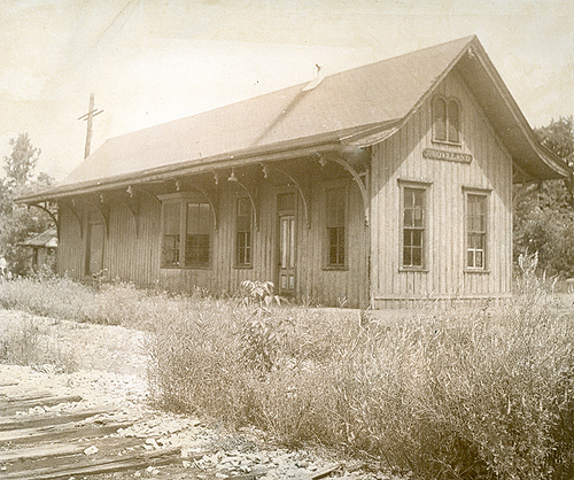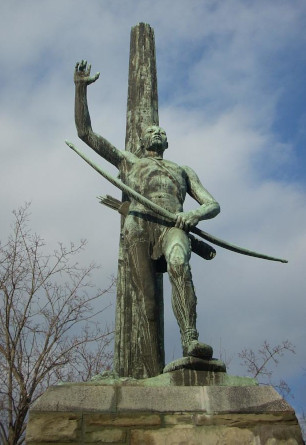Alden Station
A location between Alden village and Crittenden. It may still be standing as a business.
A location between Alden village and Crittenden. It may still be standing as a business.
Mt. Morris, first settled around 1784. It was known as "Allens Hill" and then as "Richmond Hill." The town was formed from the Town of Leicester in 1818. The former Genesee Valley Canal passed through the town.
Groveland, The Sullivan Expedition (1779) reached its farthest extent here, the site of the Boyd and Parker ambush. The first settlement occurred in 1792 and was called "Willamsburgh." The town was formed in 1789 before the creation of Livingston County. Part of Groveland was used to form parts of the Towns of Conesus 1819) and Sparta (1856).

Dansville The town was formed, along with the county, in 1796 as one of the original towns in the county, but was not settled until around 1804. The town was used to form, in whole or part, the Towns of Cohocton, Howard (both in 1812), Wayland (1848), and Fremont (1854). In 1822, part of the town, including the Village of Dansville was annexed to the Town of Sparta in Livingston County.
Painted Post is a village in Steuben County, New York, United States. The village is in the town of Erwin, west of the city of Corning. The population was 1,842 at the 2000 census. The name comes from a painted and carved post found by explorers at the junction of three local rivers

The Cable House is located on the Garden District's west side, on the east side of Eighth Street between Chestnut and Coliseum Streets. It is almost entirely obscured from view by a tall hedge. It is functionally a two-story house, although it was built by Cable as a single-story structure with a full-height basement. Columns in front of the facade provide an arcade on the basement level, and support the porch of the main level. Bracketed posts support the roof above the porch.
Colored church Sunday eve'g [On 30 April Clemens visited Winan's Chapel, also known as the First Street Methodist Episcopal Church; George Washington Cable had supplied its address in Notebook 20. The Reverend Stephen Priestly was the pastor.] (pg 552)
Opened with singing of a choir. 12th Chap. Daniel read by black clergyman, during which an aged deacon back by the door chided some young dusky dmsels saying "Takes yo' long time get seated. Settle yo' d'rectly ef yo do' get seated."
The Academy of Music, also known as American Academy of Music, is a concert hall and opera house located at 240 S. Broad Street between Locust and Manning Streets in the Avenue of the Arts area of Center City, Philadelphia It was built in 1855-57 and is the oldest opera house in the United States that is still used for its original purpose. Known as the "Grand Old Lady of Locust Street," the venue is the home of the Pennsylvania Ballet and the Opera Company of Philadelphia.
The Academy of Music was a New York City opera house, located at East 14th Street and Irving Place in Manhattan. The 4,000-seat hall opened on October 2, 1854. The New York Times review declared it to be an acoustical "triumph", but "In every other aspect ... a decided failure," complaining about the architecture, interior design and the closeness of the seating; although a follow-up several days later relented a bit, saying that the theater "looked more cheerful, and in every way more effective" than it had on opening night.